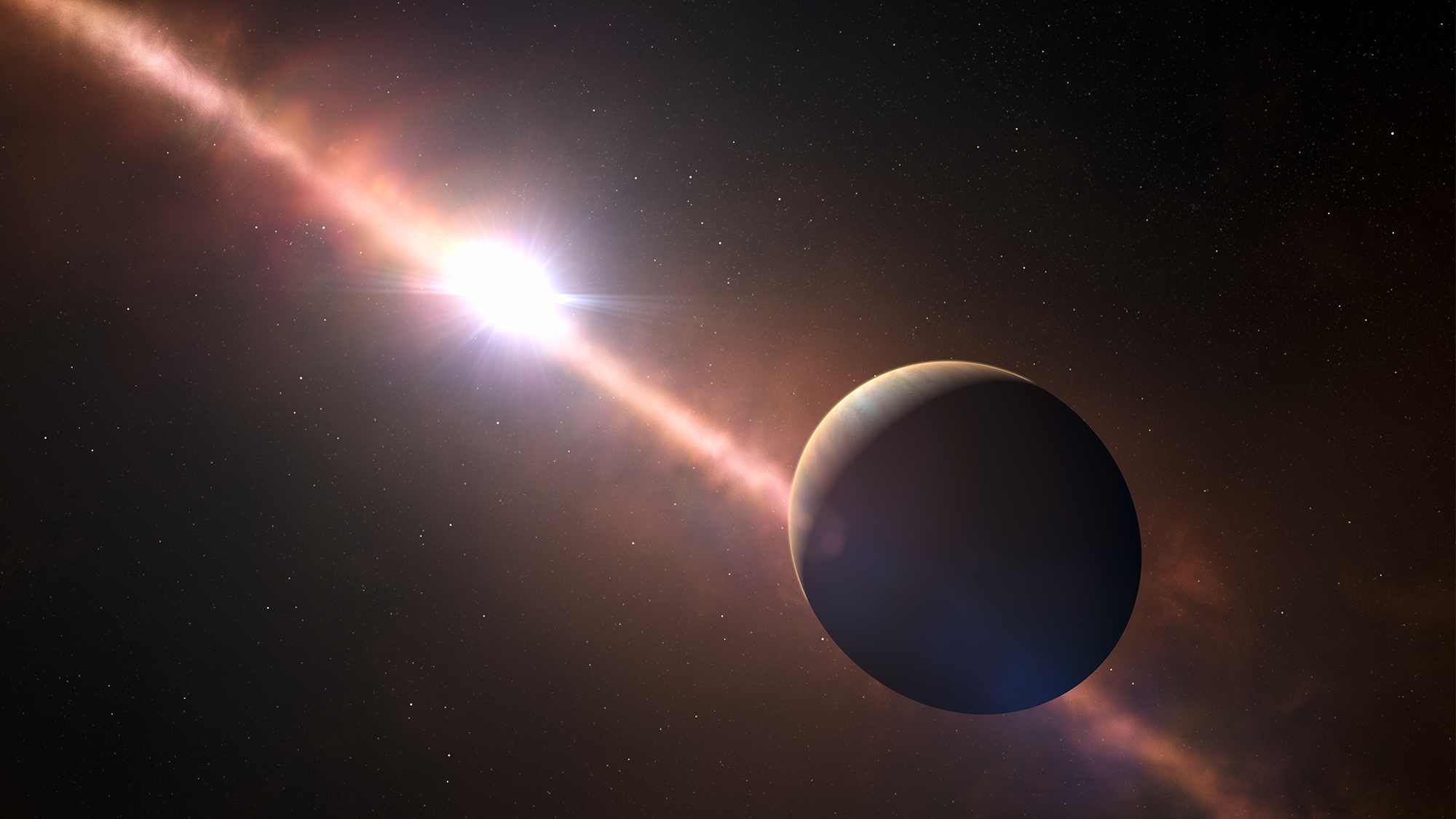

While it takes the Earth 365 days to revolve around our star (aka the sun), the exoplanet Beta Pictoris b takes 23.6 Earth years to orbit its star. Now, an astrophysicist and exoplanet imager at Northwestern University has used 17 years of footage to create a time-lapse video of this almost complete orbit of the giant planet around its star.
[Related: New image reveals a Jupiter-like world that may share its orbit with a ‘twin’.]
Beta Pictoris b is an enormous planet that has 12 times the mass of the gas giant Jupiter. It’s about 63 lightyears away from the Earth in the constellation Pictor. The whopping planet is about 10 times further away from its star than the Earth is from the sun, and Beta Pictoris b is about 1.75 times as massive and 8.7 times more luminous than our sun.
Astrophysicist Jason Wang used real time footage collected between 2003 and 2020 and condense the 17-year-long journey into 10 seconds showing Beta Pictoris b making roughly 75 percent of one full orbit of its star.
“We need another six years of data before we can see one whole orbit,” Wang said in a statement. “We’re almost there. Patience is key.”
This very young planet is only 20 to 26 million years old and was first imaged in 2003. At the time, its size and brightness made it easier to spot compared to the galaxy’s other exoplanets.
“It’s extremely bright,” Wang said. “That’s why it’s one of the first exoplanets to ever be discovered and directly imaged. It’s so big that it’s at the boundary of a planet and a brown dwarf, which are more massive than planets.”
Wang first constructed his first time-lapse footage of the Beta Pictoris b with five years of its circuit. He started working with a local high school student named Malachi Noel who used AI-driven image-processing techniques to uniformly analyze archival imaging data from the Gemini Observatory’s Gemini Planet Imager and the European Southern Observatory’s NACO and SPHERE instruments.
“Due to the long time-range, there was a lot of diversity among the datasets, which required frequent adaptations to the image processing,” Noel said in a statement. “I really enjoyed working with the data. While it is too early to know for sure, astrophysics is definitely a career path I am seriously considering.”

After the data was uniformly processed, Wang used an algorithmic technique called motion interpolation to fill in the gaps to make a continuous video. This kept the image of the exoplanet looking more smooth as it orbits through space.
“If we just combined the images, the video would look really jittery because we didn’t have continuous viewing of the system every day for 17 years,” Wang said. “The algorithm smooths out that jitter, so we can imagine how the planet would look if we did see it every day.”
Wang used a technology called adaptive optics to assemble the video, which also helped to correct the image blurring that Earth’s atmosphere causes and suppress the glare of the central star in the system. The star’s glare is still so intense that it outshines Beta Pictoris b when it gets too close.
[Related: The Milky Way’s shiniest known exoplanet has glittering metallic clouds.]
Wang hopes exoplanet videos give viewers a unique look into planetary motion and demonstrates the inner workings of the universe.
“A lot of times, in science, we use abstract ideas or mathematical equations,” Wang said. “But something like a movie—that you can see with your own eyes—gives a visceral kind of appreciation for physics that you wouldn’t gain from just looking at plots on a graph.”
